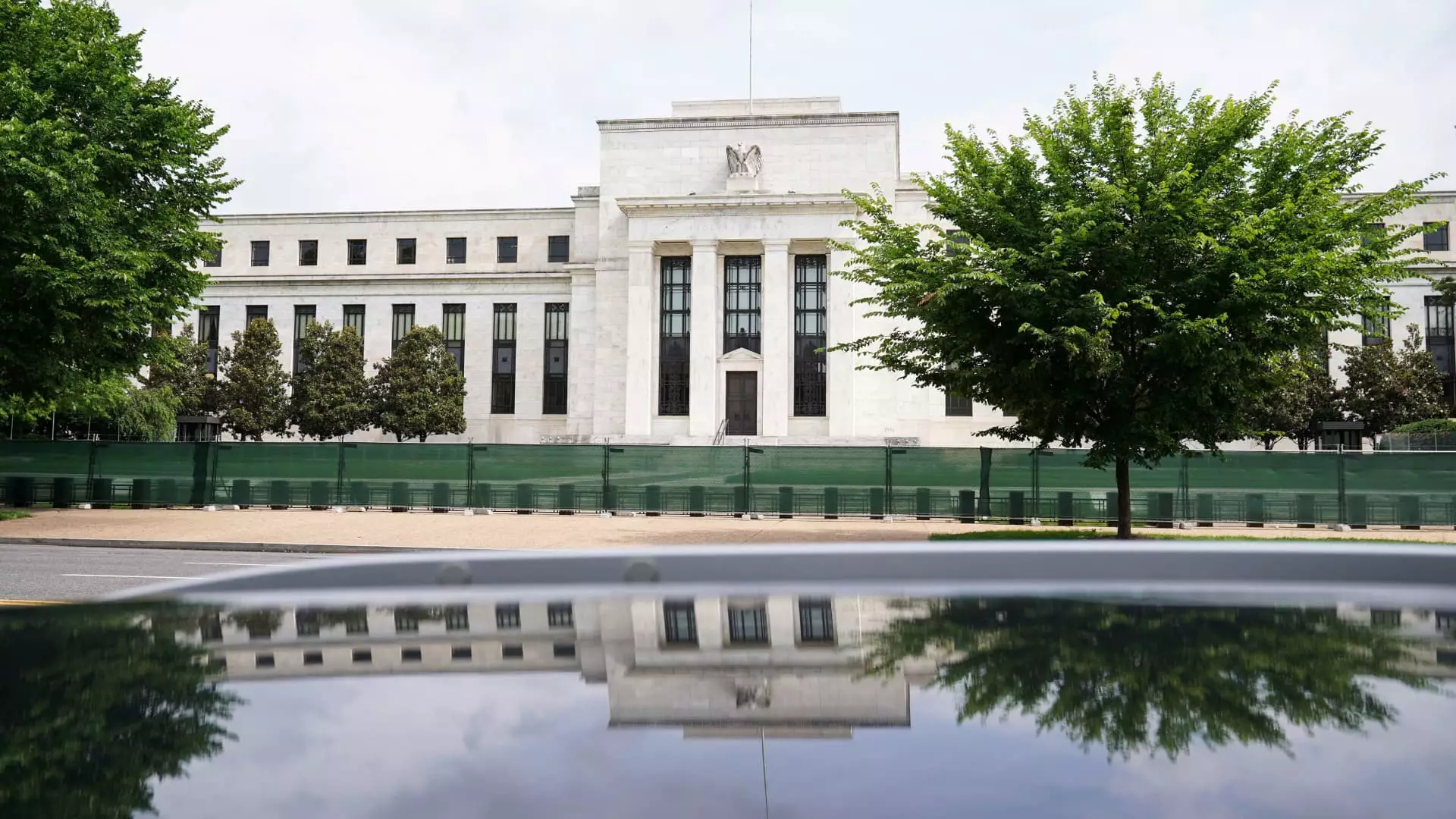As the Federal Reserve approaches the conclusion of its two-day meeting on December 18, there is widespread consensus that a quarter-point interest rate cut will be announced. This decision would mark the third consecutive reduction, cumulatively lowering the federal funds rate by one percentage point since September. The Fed’s methodical approach stems from a desire to recalibrate monetary policy post the aggressive rate hikes that were introduced in response to soaring inflation, which recently peaked at levels not seen in four decades.
Jacob Channel, a senior economic analyst at LendingTree, suggests that this could potentially be the last cut for a while, signaling a cautious stance from the Fed amid uncertainties concerning the fiscal policies expected from President-elect Donald Trump during his second term. Businesses and consumers alike are bracing for the ramifications of these adjustments, particularly in an economic landscape marked by fluctuating interest rates.
At the heart of this discussion is the federal funds rate, a crucial benchmark that dictates the rates at which banks lend to each other overnight. While consumers do not directly pay the federal funds rate, it very much influences the interest rates they encounter in their day-to-day financial dealings. Following the anticipated cut, the target rate could decrease to a range of 4.25% to 4.50%, down from its current range of 4.50% to 4.75%.
Brett House, an economics professor at Columbia University, highlights the potential for eased financial pressures due to this rate reduction. However, he cautions that the benefits of lower rates may not be universally felt; many significant interest rates that consumers encounter do not necessarily align with the federal funds rate. This discrepancy raises important questions about the true impact of the fed’s monetary policy on everyday financial obligations.
When examining consumer credit, the interplay between Fed rate cuts and credit card interest rates becomes vital. Since most credit cards feature variable interest rates, they are closely tied to the Fed’s benchmark. The average credit card interest rate has risen sharply from 16.34% in March 2022 to 20.25% as of now, nearing historical highs. Notably, even with the reduction in Fed rates, credit card issuers tend to lag in passing those reductions onto consumers, often waiting up to three months before making adjustments.
For consumers grappling with credit card debt, financial experts suggest alternative strategies such as capitalizing on 0% balance transfer credit cards. Greg McBride from Bankrate emphasizes this approach, noting that falling interest rates from the Fed may not provide sufficient relief for borrowers burdened by expensive debts.
Turning to housing, the situation becomes even more intricate. Fixed-rate mortgages, including popular 15- and 30-year options, are often linked not directly to the Fed’s actions but rather to the broader Treasury yields and economic conditions. For homeowners with fixed-rate mortgages, any cuts in Fed rates will not affect their current rates unless they decide to refinance. Current trends have indicated that although mortgage rates are seeing slight declines, they remain significantly elevated compared to the historic lows of late 2024.
The prevailing average for a 30-year fixed mortgage is approximately 6.67%, which remains above previous lows, putting home ownership increasingly out of reach for many prospective buyers. Experts indicate that this will lead to persistent volatility in mortgage rates, complicating financial decisions for potential homeowners as they navigate the uncertain landscape.
Auto loans, similarly fixed, have also been affected by rising prices, resulting in inflated monthly payments that can strain consumers’ budgets. The average rate for a new five-year car loan has climbed to around 7.59%. Despite potential benefits from future Fed cuts, the substantial sticker prices and associated financing amounts present formidable challenges for borrowers. Many are facing monthly payments that significantly impact their financial well-being, even with lower interest rates.
Impacts on Student Loans
Federal student loans are typically fixed and thus insulated from immediate effects of Fed rate adjustments. However, borrowers with private loans might find relief, especially if their loans feature variable rates. The announcement of rate cuts could open doors for refinancing opportunities for those holding variable-rate loans, potentially allowing for more favorable terms. Yet, the complexities of moving from federal to private loans come with significant risks, particularly concerning the loss of federal protections.
Interestingly, the rising interest rate environment has been somewhat beneficial for savers. The yields on high-yielding savings accounts have been at levels not seen in decades—hovering near 5%—providing a silver lining to those looking to grow their cash reserves. According to financial analysts, this period may represent one of the best times to save, as consumers navigate both the challenges of rising debt interest rates and the opportunities presented by higher returns on savings.
While the anticipated interest rate cut by the Federal Reserve is poised to provide some relief, its ripple effects across various financial sectors illustrate a complex economic reality. Understanding these intricacies is vital for consumers as they prepare to make informed financial decisions in a shifting landscape.

